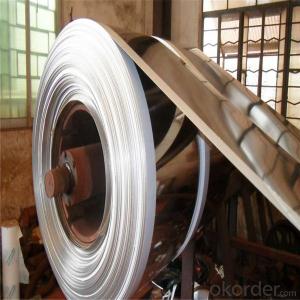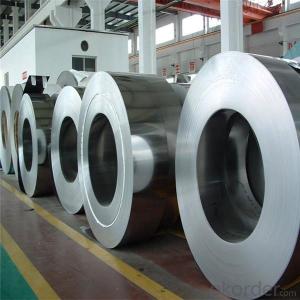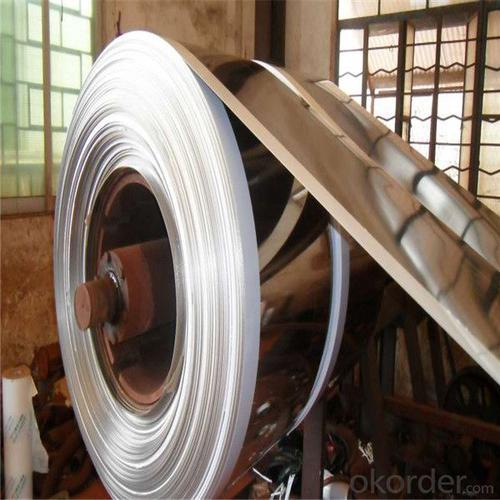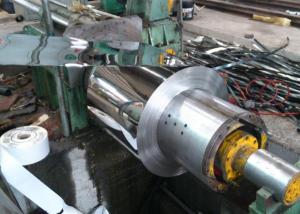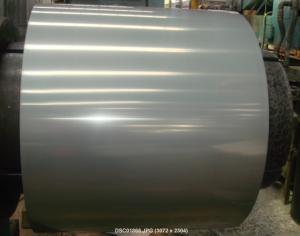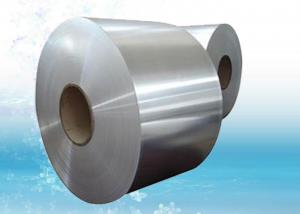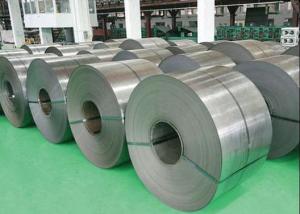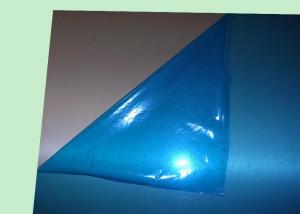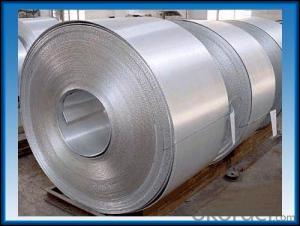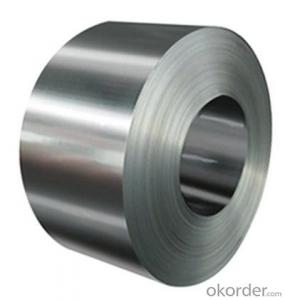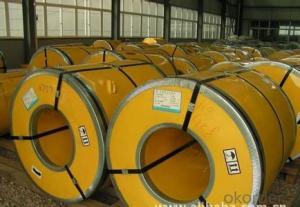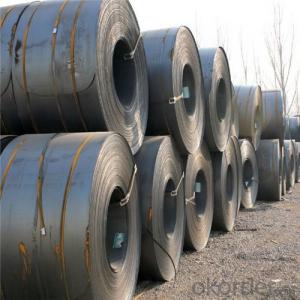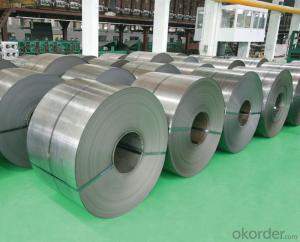Stainless Steel Coil 904l High Quality China
- Loading Port:
- Shanghai
- Payment Terms:
- TT OR LC
- Min Order Qty:
- 4 m.t.
- Supply Capability:
- 34000 m.t./month
OKorder Service Pledge
OKorder Financial Service
You Might Also Like
Specification
The reason why you Choose us
· BV and TUV Audited company .
· Industry experience over 50 years.
· Management Systems-Internal Software
· Finished Product Inventory-More Than 50000 Tons.
· Raw Material inventory -Over 80000 Mertic Tons.
· Shipment of goods -More than 50 countries worldwide.
· We have the most convenient transport and prompt delivery.
· We offer competitive price with best service .
· We have high technical production line with top quality products.
· We have win high reputation based on best quality products.
Product Description
| Item | ASTM 321 stainless steel coil /ASTM 321 stainless steel strip |
| Material | 201,202,304,304L,316,316L,321,347,347H,405,410,420,430 |
| Steel grade | 200 series,300 series,400 series |
| Standard | ASTMA240,GB/T3280-2007,JIS4304-2005,ASTMA167, EN10088-2-2005,etc |
| Surface | BA,2B,8K,No.1,No.4,No.8,mirror,polished,sand blast,bright, embossed,checkered,pickling,annealing,hair line. |
| Thickness | 0.3-60mm |
| Width | 1000mm,1200mm,1219mm,1500mm,or as required |
| Payment Terms | T/T,L/C,western union |
| Price terms | FOB,CIF,CFR,EXW |
| Delivery time | Prompt delivery or as the order quantity. |
| Package | Standard export seaworthy package or as required. |
| Application | Stainless steel coil applies to construction field, ships building industry,petroleum ,chemical industries, war and electricity industries, food processing and medicalindustry, boiler heat exchanger, machinery and hardware fields.stainless steel coilcan be made accroding to the customer's requirement. |

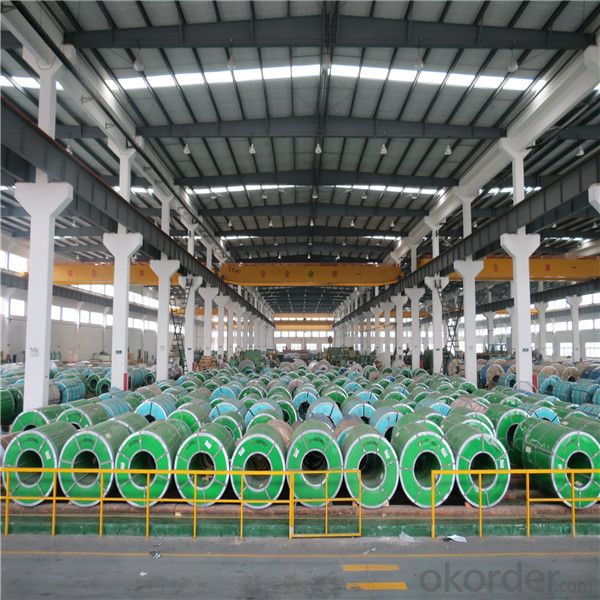
FAQ
Q:Can you provide the samples?
A:Samples can be provided with samples charge and courier fee by the buyer's side.
Q:Are the products in stock?
A:Yes.Most of our products are in stock.So we can prompt delivery.
Q:Can you accept customize?
A:Yes.It can be customized as per the customers' request.
Q:What about the quality?
A:According to the standard for production.And we can also accept the third-party inspection
and quarantine.
About the After-Sale Service
1.We are glad that customers can give us some suggestions for price and products.
2.If you have any questions,pls feel free to contact us by email or phone.
- Q: How do stainless steel strips perform in the presence of chlorine?
- Stainless steel strips generally perform well in the presence of chlorine. Stainless steel is known for its corrosion resistance properties, and it forms a passive chromium oxide layer on its surface that provides protection against oxidation and corrosion. This oxide layer acts as a barrier, preventing chlorine from reaching the underlying steel and causing corrosion. However, in certain conditions, stainless steel can still be susceptible to localized corrosion, such as pitting and crevice corrosion, in the presence of high concentrations of chlorine or in the presence of other corrosive agents. It is important to consider the specific grade of stainless steel being used, as some grades may have better resistance to chlorine than others. Additionally, proper maintenance and cleaning procedures should be followed to ensure the longevity and performance of stainless steel strips in chlorine-rich environments.
- Q: How do you determine the weight of a stainless steel strip?
- To determine the weight of a stainless steel strip, you need to know two key factors: the dimensions of the strip and the density of stainless steel. Firstly, measure the length, width, and thickness of the stainless steel strip using a ruler or calipers. Ensure you have accurate measurements in the same unit of measurement, such as inches or millimeters. Next, find the density of stainless steel, which is typically around 7.93 grams per cubic centimeter or 7930 kilograms per cubic meter. This value may vary slightly depending on the specific grade and composition of the stainless steel. Now, you can calculate the weight of the stainless steel strip using the formula: Weight = Length x Width x Thickness x Density If your measurements are in inches, ensure to convert them to the appropriate unit for density (e.g., cubic inches to cubic centimeters). Similarly, if your measurements are in millimeters, convert them to meters before multiplying by the density. After performing the calculations, you will have the weight of the stainless steel strip in grams or kilograms, depending on the unit of density used. Remember to consider any additional factors that may impact the weight, such as the presence of coatings or surface finishes, which can add extra weight to the strip.
- Q: Can 111 stainless steel strips be passivated to enhance corrosion resistance?
- Certainly! Passivation can improve the corrosion resistance of 111 stainless steel strips. It involves removing iron from the surface and creating a protective oxide layer. This layer acts as a barrier, preventing further corrosion and increasing resistance to chemicals, moisture, and temperature. Industries such as automotive, aerospace, medical, and food processing commonly use passivation to enhance the longevity and performance of stainless steel components. Consequently, by passivating the 111 stainless steel strips, their corrosion resistance can be enhanced, resulting in improved durability and reliability for their intended applications.
- Q: What are the common applications of stainless steel strips?
- Due to their diverse advantageous properties, stainless steel strips find a wide range of applications. Here, we present some prevalent uses of stainless steel strips: 1. Construction: The construction industry extensively employs stainless steel strips for multiple purposes. These strips are commonly utilized in structural components, roofing, cladding, and architectural features. Their resistance to corrosion, durability, and aesthetic appeal make them highly desirable in this field. 2. Automotive industry: In the automotive sector, stainless steel strips are utilized for manufacturing components such as exhaust systems, trim, grills, and fuel tanks. Their ability to withstand heat, corrosion, and impact makes them an ideal choice, ensuring the longevity and safety of vehicles. 3. Kitchen appliances: Stainless steel strips are widely incorporated in the production of kitchen appliances, including countertops, sinks, cookware, and utensils. Their corrosion resistance, ease of cleaning, and hygienic properties make them a popular option in the food industry. 4. Medical equipment: The manufacturing of medical instruments and equipment heavily relies on stainless steel strips. These strips are preferred due to their biocompatibility, non-reactive nature, and resistance to sterilization methods. Consequently, they are suitable for surgical tools, implants, and medical devices. 5. Electronics: In the electronics industry, stainless steel strips are employed for various applications, such as connectors, terminals, springs, and shielding. Their electrical conductivity, durability, and resistance to corrosion make them ideal for these purposes. 6. Oil and gas industry: The oil and gas industry commonly employs stainless steel strips for manufacturing pipes, tanks, valves, and other equipment. The strips' resistance to corrosion and high temperatures makes them suitable for harsh environments, ensuring equipment integrity. 7. Aerospace industry: Stainless steel strips play a crucial role in the aerospace industry when manufacturing aircraft components, including structural parts, fasteners, and fittings. The strips' high strength-to-weight ratio, resistance to extreme temperatures, and corrosion resistance contribute to aircraft safety and performance. 8. Decorative and architectural purposes: Stainless steel strips are utilized for decorative purposes in architecture and interior design. They can be shaped, polished, and finished to create attractive and long-lasting features, such as handrails, elevator panels, signage, and sculptures. These examples showcase the common applications of stainless steel strips. Their versatile properties make them invaluable in various industries where strength, corrosion resistance, hygiene, and aesthetics are paramount.
- Q: How do stainless steel strips perform in cryogenic conditions?
- Stainless steel strips are renowned for their outstanding performance in cryogenic conditions. The remarkable structural integrity and dimensional stability of stainless steel are maintained even in extremely low temperatures, thanks to its low thermal expansion coefficient. This characteristic renders stainless steel strips highly suitable for use in cryogenic environments, where alternative materials may become brittle or lose their properties. Moreover, stainless steel possesses remarkable corrosion resistance, a critical feature in cryogenic conditions where moisture and condensation can occur. The elevated levels of chromium in stainless steel create a protective oxide layer, preventing corrosion and ensuring the material's durability and performance. Furthermore, stainless steel strips exhibit commendable mechanical properties, even in low temperatures. They retain their strength and ductility, enabling them to endure the stresses and strains encountered in cryogenic environments. Consequently, stainless steel is an ideal option for applications in aerospace, medical, and scientific equipment that operate under cryogenic conditions. In conclusion, stainless steel strips exhibit exceptional performance in cryogenic conditions due to their low thermal expansion coefficient, corrosion resistance, and mechanical properties. They offer reliability, durability, and longevity, making them the preferred material choice for various industries that necessitate materials capable of withstanding extreme cold temperatures.
- Q: Can stainless steel strips be used in the production of medical implants?
- Yes, stainless steel strips can be used in the production of medical implants. Stainless steel is widely used in the medical industry due to its excellent corrosion resistance, durability, and biocompatibility. It can be easily fabricated into strips, which can then be shaped and formed into various medical implant devices such as orthopedic implants, surgical instruments, and dental implants.
- Q: Can stainless steel strips be heat resistant?
- Yes, stainless steel strips can be heat resistant. Stainless steel is known for its high resistance to heat and corrosion. Depending on the grade of stainless steel, it can withstand temperatures ranging from a few hundred degrees Celsius to over a thousand degrees Celsius. This makes stainless steel strips suitable for various applications where heat resistance is required, such as in automotive, aerospace, and industrial sectors. Additionally, stainless steel's heat resistance properties make it an ideal choice for cookware, oven components, and other household appliances that are exposed to high temperatures.
- Q: Can stainless steel strips be used for medical implants?
- Yes, stainless steel strips can be used for medical implants. Stainless steel is a commonly used material in the medical field due to its excellent mechanical properties, corrosion resistance, and biocompatibility. It can be easily shaped into strips or other desired forms to meet the specific requirements of medical implants. Stainless steel strips are often used in orthopedic implants such as plates, screws, and wires, as well as in cardiovascular implants like stents and pacemakers. The material's ability to withstand sterilization processes and its long-term durability make it a suitable choice for medical implants. However, it is important to note that the specific grade of stainless steel used, as well as the design and surface finish of the strips, should be carefully considered to ensure compatibility with the human body and minimize the risk of adverse reactions or complications.
- Q: Can stainless steel strips be used in the production of HVAC grilles?
- Indeed, HVAC grilles can incorporate stainless steel strips. The durability, corrosion resistance, and aesthetic appeal of stainless steel make it a favored material for HVAC grilles. By utilizing stainless steel strips in the production process, the grilles can endure the rigorous conditions of heating, ventilation, and air conditioning systems without succumbing to rust or deterioration over time. Moreover, stainless steel strips provide a sleek and contemporary look, making them an excellent selection for architectural and design purposes. In summary, stainless steel strips present a fitting and dependable choice for manufacturing HVAC grilles.
- Q: How are stainless steel strips manufactured?
- Stainless steel strips are manufactured using a combination of processes that involve melting, rolling, and annealing. The first step in the manufacturing process is melting the raw materials, which typically include iron ore, chromium, and nickel, in a furnace at extremely high temperatures. This melting process ensures that the elements are well mixed and form a homogeneous molten metal. Once the molten metal is obtained, it is poured into large molds to form slabs or billets. These slabs are then heated and rolled between a series of rollers to reduce their thickness and form long, flat strips. This rolling process is repeated several times, with each pass reducing the thickness of the steel strip until the desired dimensions are achieved. After the rolling process, the stainless steel strips undergo an annealing treatment. Annealing involves subjecting the strips to high temperatures and controlled cooling to relieve internal stresses, improve ductility, and enhance corrosion resistance. This process also helps to refine the grain structure of the steel, resulting in improved mechanical properties. Once the annealing is complete, the stainless steel strips may undergo additional processes such as pickling, where they are immersed in an acid solution to remove any surface impurities or scale. They may also be cold-rolled to further refine the dimensions and surface finish of the strips. Finally, the stainless steel strips are cut into their desired lengths and widths, and they may be further processed or treated depending on the intended application. These strips can then be used in a wide range of industries, including automotive, construction, manufacturing, and kitchenware, among others. Overall, the manufacturing process of stainless steel strips involves a careful balance of melting, rolling, annealing, and finishing steps to achieve the desired properties and dimensions of the final product.
Send your message to us
Stainless Steel Coil 904l High Quality China
- Loading Port:
- Shanghai
- Payment Terms:
- TT OR LC
- Min Order Qty:
- 4 m.t.
- Supply Capability:
- 34000 m.t./month
OKorder Service Pledge
OKorder Financial Service
Similar products
Hot products
Hot Searches
Related keywords
